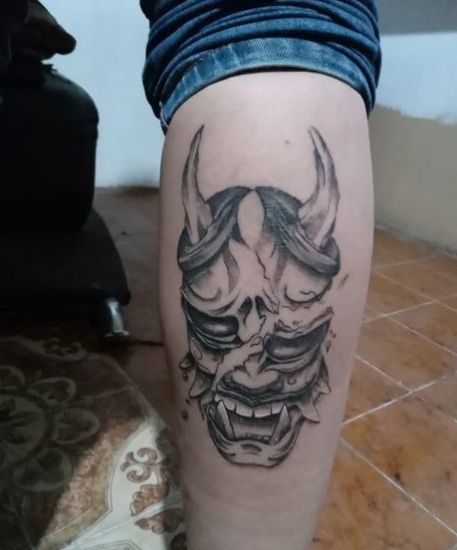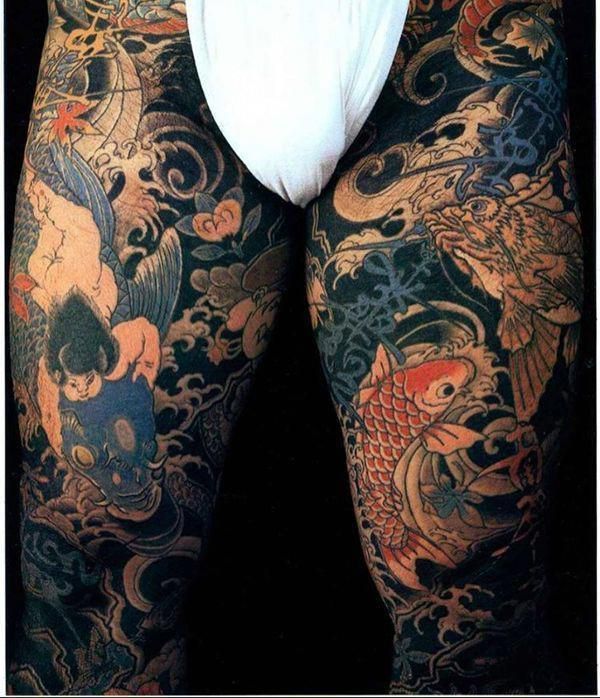The Yakuza, Japan's infamous organized crime syndicate, is known for its intricate and visually striking tattoos, known as irezumi or horimono. These tattoos have a long history and deep cultural significance, often telling stories of loyalty, bravery, and the unique path of the Yakuza member. The art of irezumi is not merely a decorative choice but a symbol of dedication and a lifetime commitment.
The Cultural Significance of Yakuza Tattoos

Yakuza tattoos are not just skin-deep; they are a testament to the rich cultural heritage of Japan and the unique underworld of the Yakuza. These tattoos often depict mythological creatures, natural elements, and historical figures, each with its own symbolic meaning.
Mythological and Historical Symbols
One of the most common motifs in Yakuza tattoos is the dragon, symbolizing strength, power, and the ability to overcome challenges. The dragon is often depicted with a pearl, representing wealth and success. Another popular symbol is the koi fish, which represents perseverance and the ability to swim against the current, a fitting metaphor for the often-challenging life of a Yakuza member.
Yakuza tattoos also feature a variety of other mythological creatures, such as the oni, or demon, symbolizing protection and strength. Historical figures like the famous samurai, Oda Nobunaga, might also make an appearance, reflecting a respect for the samurai code of honor.
| Symbol | Meaning |
|---|---|
| Dragon | Strength, Power, Overcoming Challenges |
| Koi Fish | Perseverance, Overcoming Adversity |
| Oni (Demon) | Protection, Strength |
| Samurai Figures | Honor, Respect for the Samurai Code |

Nature and the Four Seasons
Nature plays a significant role in Yakuza tattoos, with common motifs including flowers, trees, and other natural elements. For instance, the cherry blossom, or sakura, is a symbol of beauty and the transience of life. The pine tree, known as matsu, represents longevity and resilience.
The concept of the four seasons is also often depicted, with each season carrying its own symbolic meaning. Spring represents new beginnings, summer is associated with growth and vitality, autumn signifies the harvest and a time of reflection, while winter symbolizes endurance and resilience.
| Natural Element | Meaning |
|---|---|
| Cherry Blossom | Beauty, Transience of Life |
| Pine Tree | Longevity, Resilience |
| Four Seasons | New Beginnings, Growth, Reflection, Endurance |
The Process and Artistry of Irezumi

The process of creating Yakuza tattoos, or irezumi, is an art form in itself, often taking years to complete and requiring a high level of dedication and pain endurance. The traditional method involves hand-tapping the ink into the skin using specialized tools, a technique known as tebori.
Tebori: The Traditional Art of Hand-Tapping
The tebori technique, while time-consuming and painful, results in a unique and distinctive style of tattoo. The process is highly skilled, with the tattoo artist using a specialized hand tool to tap the ink into the skin. This method allows for a more natural and subtle blending of colors, creating a soft, yet vibrant, effect.
The pain associated with tebori is often seen as a rite of passage, with many Yakuza members choosing this method to demonstrate their commitment and toughness. Despite the pain, the result is a tattoo that is not only beautiful but also deeply personal and unique.
Modern Techniques and Their Impact
With the advent of modern tattoo machines, some Yakuza members have opted for the quicker and less painful machine tattooing method. However, purists argue that the traditional tebori method is essential to maintaining the integrity and cultural significance of irezumi.
While machine tattoos can be just as detailed and beautiful, they often lack the subtle nuances and depth of tebori tattoos. Additionally, the machine tattooing process is generally faster, which some argue detracts from the commitment and dedication that the traditional method requires.
Tattoos as a Mark of Status and Identity
Yakuza tattoos are not only visually striking but also serve as a mark of status and identity within the Yakuza hierarchy. The extent and detail of a member’s tattoos can often indicate their rank, experience, and dedication to the organization.
Rank and Status Indicators
The full-body tattoos, often referred to as horimono, are a sign of a member’s commitment and loyalty to the Yakuza. These tattoos, which can cover the entire back, arms, and legs, are a visible demonstration of a member’s dedication and their acceptance of the life of crime and honor that the Yakuza represents.
The more elaborate and intricate the tattoo, the higher the status of the member. Tattoos that depict complex scenes, such as battles or historical events, or that incorporate multiple symbolic elements, are often reserved for the most respected and senior members of the Yakuza.
The Ritual and Ceremony of Tattooing
The process of getting a Yakuza tattoo is often a ritualistic and ceremonial experience. The member must endure the pain of the tattooing process, which can take many sessions and years to complete. This endurance is seen as a test of character and a demonstration of the member’s commitment to the Yakuza lifestyle.
The tattoo artist, or horishi, is often highly respected within the Yakuza community, with their skill and artistry being a source of pride for the organization. The relationship between the horishi and the member is often a long-lasting one, with the artist understanding the symbolic significance and personal meaning behind each tattoo.
The Future of Yakuza Tattoos: A Cultural Evolution
While Yakuza tattoos have a long and storied history, the art form is not static. It continues to evolve, reflecting the changing nature of the Yakuza and Japanese society as a whole. Today, we see a blend of traditional and modern elements, with some Yakuza members opting for more contemporary designs while still honoring the cultural significance of irezumi.
Modern Interpretations and Adaptations
In recent years, we’ve seen a rise in Yakuza members choosing to incorporate modern elements into their tattoos. This might include more abstract designs, contemporary color palettes, or even digital art influences. These adaptations demonstrate a willingness to embrace new ideas while still respecting the traditional roots of irezumi.
Additionally, with the increasing awareness and appreciation of Japanese culture globally, we've seen a rise in non-Yakuza individuals, both Japanese and foreign, choosing to get irezumi tattoos. This trend reflects a broader interest in Japanese art and culture and a desire to connect with this unique and rich tradition.
Preserving Cultural Heritage
Despite the modern adaptations, the core values and symbolism of Yakuza tattoos remain. The art form continues to be a powerful expression of identity, loyalty, and cultural heritage. It serves as a reminder of the rich history and traditions of the Yakuza and Japan as a whole.
As the Yakuza continues to evolve and adapt to the changing social and legal landscape, the role and significance of tattoos within the organization may also shift. However, the enduring legacy of irezumi as a cultural symbol is likely to remain, ensuring its place in the hearts and minds of those who appreciate its beauty and meaning.
Are Yakuza tattoos only for men?
+While traditionally, Yakuza tattoos were more prevalent among men, there is no strict gender restriction. Women in the Yakuza or those closely associated with the organization may also choose to get tattoos. However, the prevalence and extent of tattoos on women are generally less common.
Do all Yakuza members have tattoos?
+No, not all Yakuza members have tattoos. While tattoos are a common symbol of dedication and status within the organization, some members may choose not to have them for various personal reasons. The decision to get a tattoo is an individual one and is often influenced by personal experiences and beliefs.
What is the significance of the back piece in Yakuza tattoos?
+The back piece, or seimyo, is a significant aspect of Yakuza tattoos. It often depicts the most elaborate and detailed scenes, reflecting the member’s personal story or significant events in their life. The back piece is a visible statement of the member’s commitment and serves as a symbol of their dedication to the Yakuza.